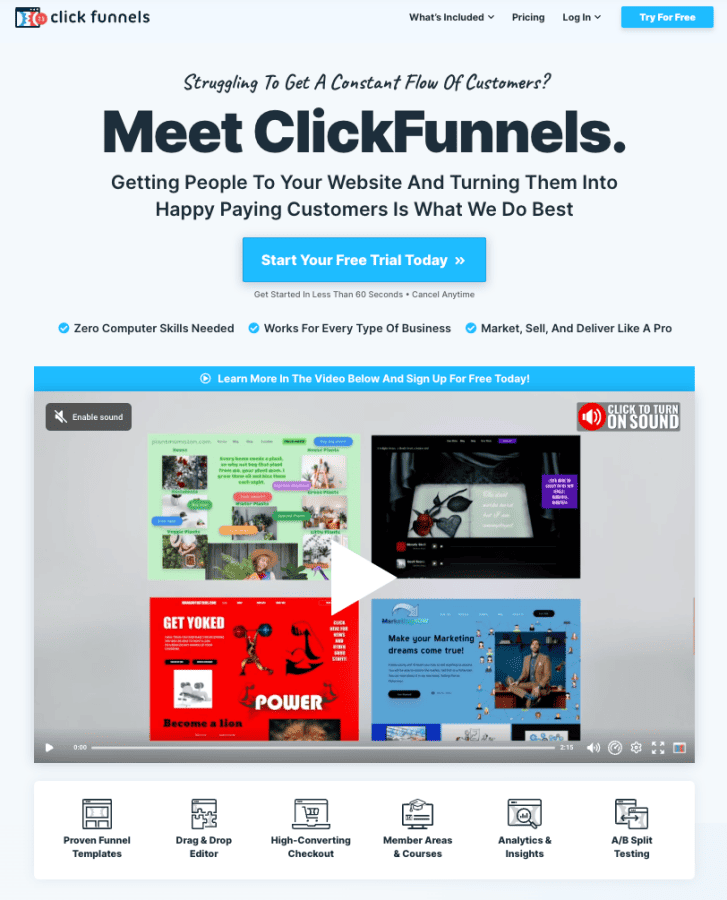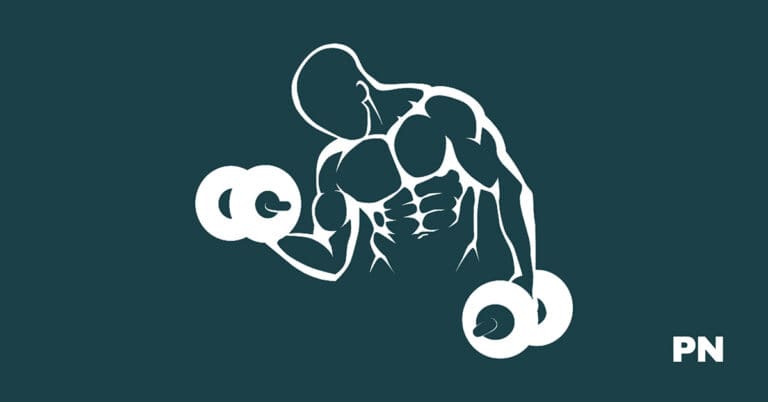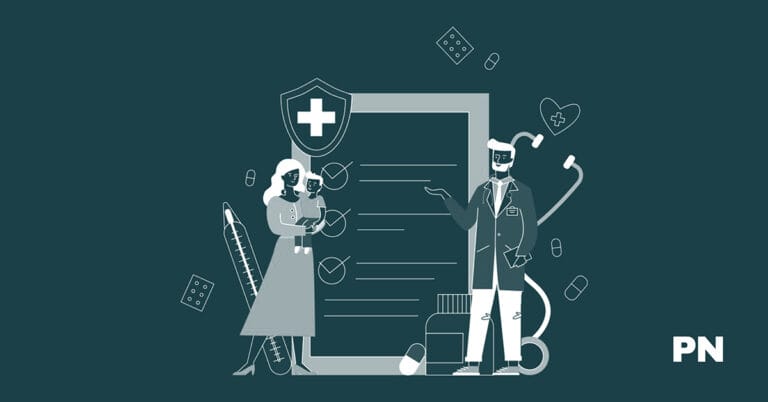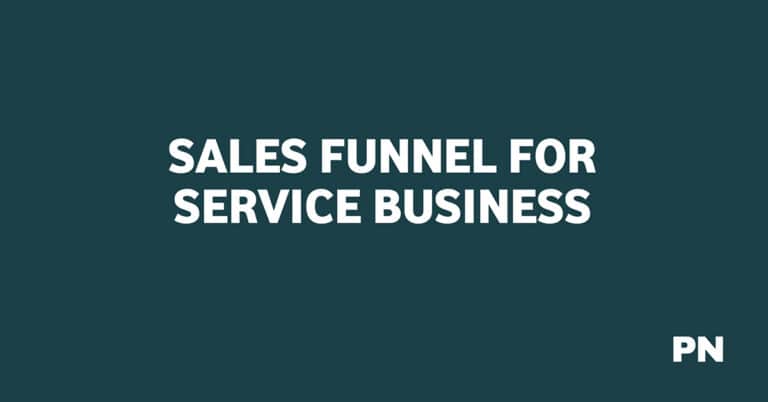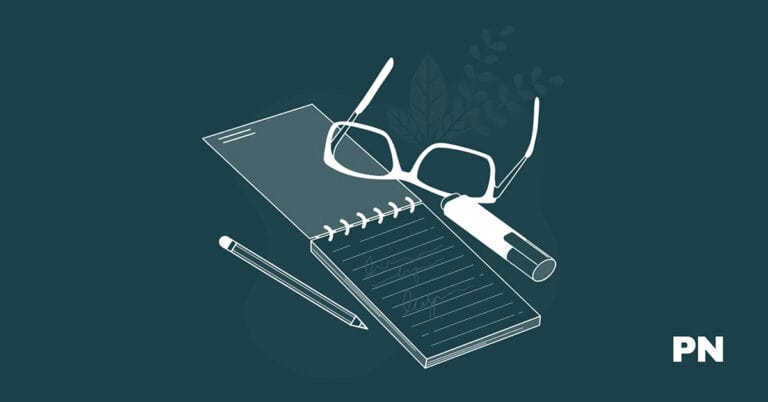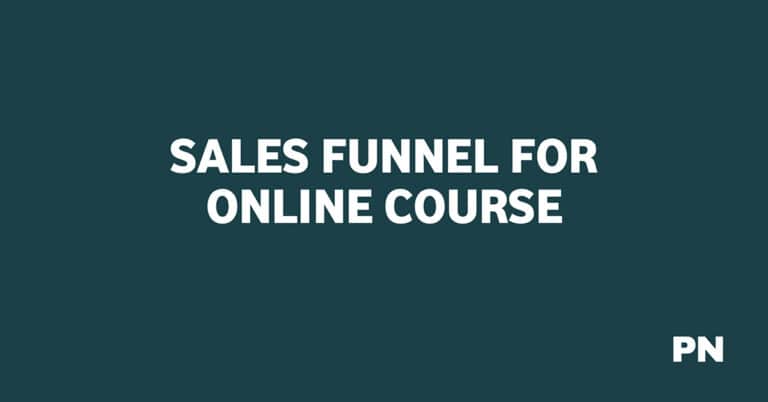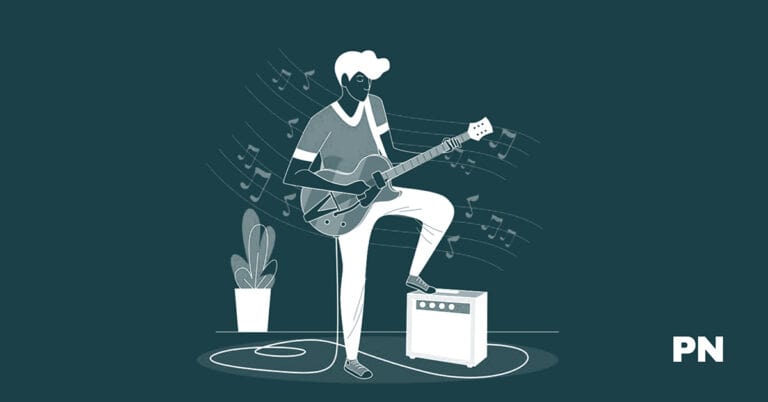Sales Funnel for Saas Guide
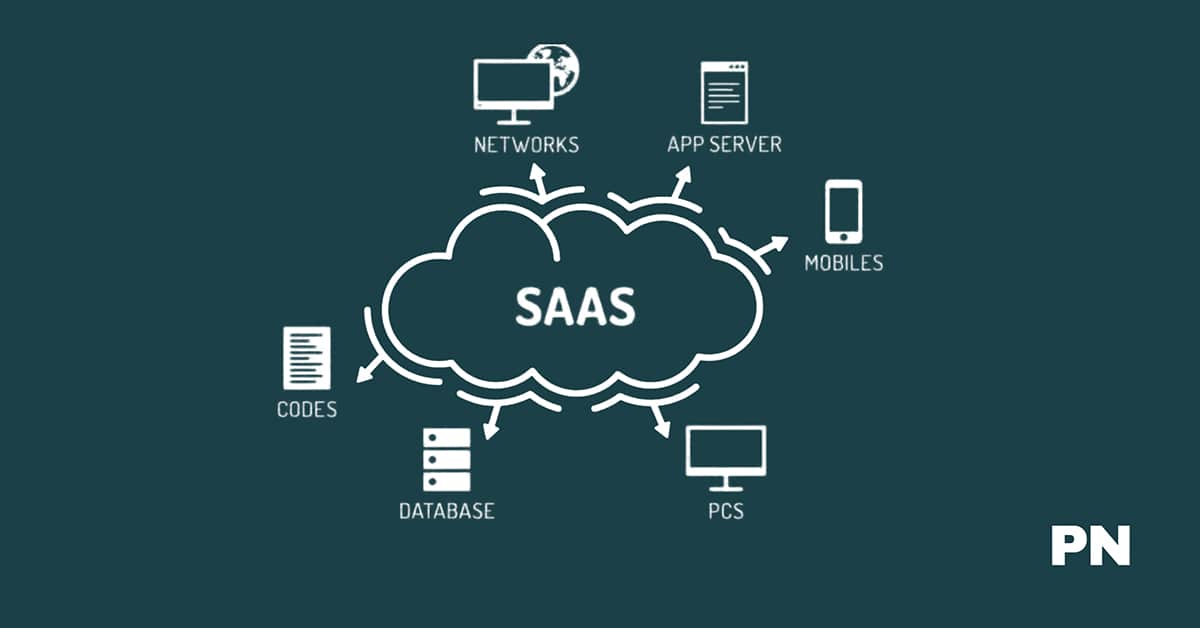
Did you know a well-optimized sales funnel can differentiate between remarkable success and mediocrity for your SaaS business?
A sales funnel is a step-by-step process that guides potential customers toward a purchase decision. It is a crucial element of any successful SaaS marketing strategy.
Understanding the sales funnel and how it works can help you attract, engage, and convert leads into loyal customers.
This Sales Funnel for SaaS Guide teaches you everything you need to know about creating a highly effective sales funnel for your SaaS business.
This guide will provide expert advice and actionable insights on everything from building a solid foundation to optimizing your marketing efforts and maximizing your sales potential.
Whether you are just starting or looking to improve your existing sales funnel, this guide will help you achieve your goals and grow your business. So, let’s dive in and explore the world of SaaS sales funnels together.
What is a Saas Sales Funnel?

A SaaS sales funnel visually represents the customer journey from awareness to conversion. It is a step-by-step process that guides potential customers towards becoming paying customers. The funnel is divided into stages, each with a specific goal and target audience.
The ultimate goal of a SaaS sales funnel is to increase conversion rates and generate revenue for the company. The funnel is designed to help potential customers move through the buying process smoothly and efficiently.
By guiding them through the funnel, SaaS companies can build relationships with their customers and increase their chances of converting them into paying customers.
Here are the typical stages of a SaaS sales funnel:
- Top of the funnel (TOFU): This is the awareness stage, where potential customers first become aware of your product or service. This stage aims to attract as many potential customers as possible and introduce them to your brand. This is usually done through content marketing, social media, and other advertising channels.
- Middle of the funnel (MOFU): This is the consideration stage, where potential customers evaluate your product or service. This stage aims to provide more information about your product or service and convince them that it is the right solution for their needs. This is usually done through email marketing, webinars, and other lead-nurturing tactics.
- Bottom of the funnel (BOFU): This is the decision stage, where potential customers are ready to purchase. The goal of this stage is to convert them into paying customers. This is usually done through product demos, free trials, and other sales tactics.
By understanding the stages of a SaaS sales funnel, you can optimize your marketing and sales strategies to improve your conversion rates and generate more revenue for your business.
Why Do You Need a SaaS Sales Funnel?
If you’re running a SaaS business, you need a sales funnel. A sales funnel is a roadmap that guides potential customers through the buying journey, from initial awareness to becoming a paying customer.
It’s a crucial component of your marketing strategy that helps you convert leads into paying customers.
Here are some reasons why you need a SaaS sales funnel:
1. Helps You to Understand Your Customers
A SaaS sales funnel helps you better understand your customers. By mapping out your customers’ journeys, you’ll be able to identify the pain points, challenges, and objections they face at each funnel stage.
This information will help you create targeted marketing messages and content that resonate with your potential customers.
2. Improves Conversion Rates
A well-designed SaaS sales funnel can significantly improve your conversion rates. By guiding your potential customers through the buying journey, you can address their objections and concerns, build trust, and establish credibility.
This will make it easier for them to purchase, resulting in higher conversion rates.
3. Increases Customer Retention
A SaaS sales funnel is not just about acquiring new customers; it’s also about retaining them. You can build a strong relationship with your customers by providing a positive customer experience at each funnel stage. This will increase customer loyalty and reduce churn rates.
4. Saves Time and Resources
A SaaS sales funnel can save you time and resources by automating the lead generation and nurturing process.
Using marketing automation tools, you can create targeted messages and content that are delivered to your potential customers at the right time. This will free up your time and resources, allowing you to focus on other aspects of your business.
The SaaS sales funnel is an essential component of your marketing strategy. It helps you to understand your customers, improve conversion rates, increase customer retention, and save time and resources.
Creating a well-designed sales funnel allows you to grow your SaaS business and achieve your marketing goals.
Stages of the Saas Sales Funnel
Understanding the stages of the SaaS sales funnel is essential for effectively guiding potential customers toward becoming paying users.
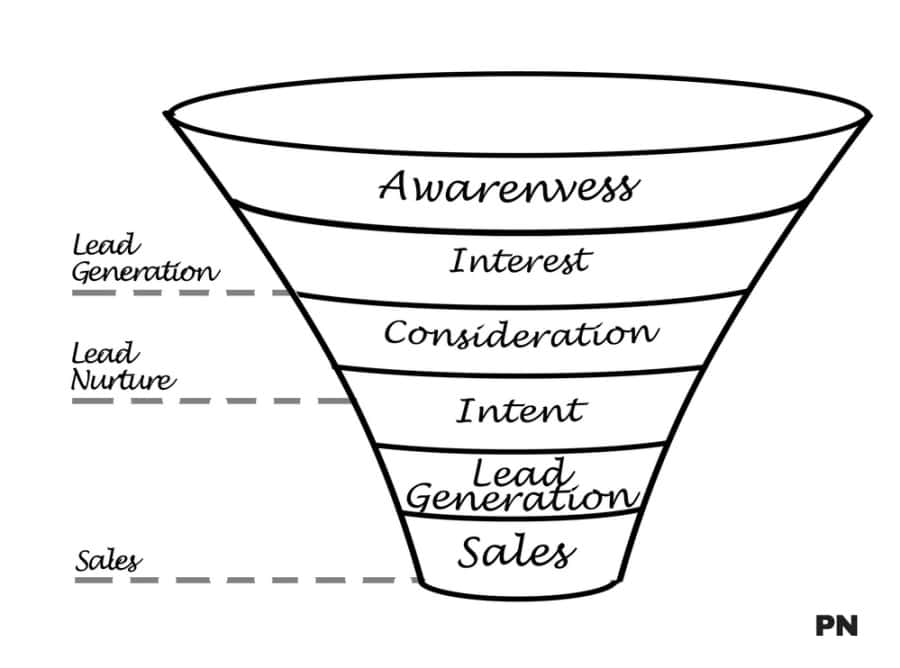
The SaaS sales funnel consists of four stages: the awareness stage (Top of the Funnel, TOFU), The Consideration/Evaluation Stage (MOFU), the Purchase Stage (Bottom Of The Funnel), and the Post-Purchase.
In this section, I will explain each stage in a valuable and confident tone and give context to each stage using relatable analogies that are understandable for a SaaS business owner.
Here are the stages of the Saas sales funnel:
The Awareness Stage (Top of the Funnel, TOFU)
The first stage of the Saas sales funnel is the Awareness Stage, also known as the Top of the Funnel (TOFU). At this stage, potential customers are just becoming aware of your product or service.
Your goal at this stage is to create brand awareness and generate interest in your product. This can be achieved through various marketing methods, such as social media, content marketing, and paid advertising.
Think of the Awareness Stage as a first date with a potential customer. You want to make a good impression and show them what makes your product unique and valuable.
By providing valuable content and engaging with potential customers, you can build trust and establish your brand as a thought leader in your industry.
The Consideration/Evaluation Stage (MOFU)
The second stage of the Saas sales funnel is the Consideration/Evaluation Stage, also known as the Middle of the Funnel (MOFU). At this stage, potential customers have shown interest in your product and are considering whether or not to make a purchase.
Your goal at this stage is to provide more information about your product and why it is the best solution for their needs.
Think of the Consideration/Evaluation Stage as a second date with a potential customer. You want to show them why your product is the best fit for their needs and address any concerns or objections they may have.
This can be achieved through personalized email campaigns, product demos, and customer testimonials. By providing valuable information and addressing any concerns, you can build trust and establish your brand as a reliable and trustworthy solution.
Purchase Stage (Bottom Of The Funnel)
The third stage of the Saas sales funnel is the Purchase Stage, also known as the Bottom of the Funnel. At this stage, potential customers have decided to purchase and become paying users. Your goal at this stage is to make the purchasing process as smooth and easy as possible.
Think of the Purchase Stage as the engagement stage with a potential customer. You want to make the process as easy and seamless as possible to ensure a smooth transition from potential customer to paying user.
This can be achieved through clear and concise pricing information, easy-to-use payment methods, and a user-friendly interface.
Post-Purchase Stage
The fourth stage of the Saas sales funnel is the Post-Purchase stage. At this stage, you aim to provide a positive user experience and ensure customer satisfaction. This can be achieved through personalized onboarding, ongoing customer support, and regular check-ins.
Think of the Post-Purchase stage as the honeymoon phase with a customer. You want to ensure a positive experience and that they continue to see the value in your product. By providing ongoing support and addressing concerns or issues, you can build a long-term relationship with your customers.
Repeat Purchase Stage
The final stage of the Saas sales funnel is the Repeat Purchase stage. At this stage, your goal is to encourage customers to continue using your product and make repeat purchases. This can be achieved through regular communication, personalized upselling, and ongoing customer support.
Think of the Repeat Purchase stage as a long-term commitment with a customer. You want to continue to provide value and ensure customer satisfaction to encourage them to continue using your product. By providing ongoing support and personalized upselling, you can build a loyal customer base and ensure long-term success for your SaaS business.
How Do I Create a SaaS Sales Funnel?
Creating a SaaS sales funnel involves four key stages guiding potential customers through decision-making.
Here are the steps to follow when creating a SaaS sales funnel:
- Awareness: This is the first stage of the SaaS sales funnel. At this stage, you must create awareness about your product or service among potential customers. You can achieve this by creating content that educates your target audience about the problem your product or service solves. You can also use paid advertising to reach a wider audience.
- Interest: Once potential customers become aware of your product or service, the next step is to generate interest. You can achieve this by providing more detailed information about it. You can also offer a free trial or demo to give potential customers a taste of what your product or service can do.
- Decision: At this stage, potential customers are considering whether or not to purchase your product or service. You must give them the information they need to make an informed decision. This can include case studies, customer reviews, and product demos.
- Action: This is the final stage of the SaaS sales funnel. At this stage, potential customers convert into paying customers. It would be best if you made it as easy as possible for them to take action. This can include providing a clear call-to-action, discount or special offer, or excellent customer service.
By following these steps, you can create a SaaS sales funnel that guides potential customers through decision-making and converts them into paying customers.
What is The Best Funnel Software for Saas?
When it comes to choosing the best sales funnel software for your SaaS business, there are several factors you should consider. Some of the most important factors include the software’s features, ease of use, and scalability.
However, one software that stands out from the rest is ClickFunnels.
ClickFunnels is powerful sales funnel software designed to help entrepreneurs quickly build and scale their businesses. With its suite of SaaS features, ClickFunnels provides everything you need to create and manage your sales funnel, including upsells, downsells, and free funnel templates.
One of the key features that sets ClickFunnels apart from other sales funnel software is its shopping cart and checkout functionality. With ClickFunnels, you can easily add a shopping cart and checkout to your funnel, making it easy for your customers to purchase your products or services.
Another great feature of ClickFunnels is its CRM and analytics tools. These tools allow you to easily track your customers’ behavior and make data-driven decisions to improve your funnel’s performance.
However, perhaps the best thing about ClickFunnels is its easy use. With its drag-and-drop interface, you can quickly and easily customize your sales funnel without coding or design experience.
Frequently Asked Questions
What is a funnel in a SaaS business?
A funnel, or a sales funnel or conversion funnel, is a visual representation of a potential customer’s journey from initial awareness of your product to the point of purchase. In a SaaS business, the funnel typically includes stages such as awareness, consideration, conversion, and retention.
What are the key stages in developing a SaaS sales funnel?
The key stages in developing a SaaS sales funnel are:
- Awareness: This is the top funnel where you attract potential customers to your product through various marketing channels.
- Consideration: At this stage, potential customers have shown interest in your product and are considering whether to purchase it.
- Conversion: This is the stage where the potential customer makes a purchase and becomes a paying customer.
- Retention: After the purchase, the goal is to retain the customer and encourage them to continue using your product.
How do you create an effective SaaS sales funnel?
To create an effective SaaS sales funnel, you need to:
- Define your target audience: Understand who your ideal customer is and what their pain points are.
- Create compelling content: Develop content that addresses your target audience’s pain points.
- Optimize your website: Make sure your website is user-friendly and optimized for conversion.
- Nurture your leads: Use email marketing and other tactics to nurture leads and move them through the funnel.
- Analyze and optimize: Continuously analyze your funnel metrics and make adjustments to improve performance.
How can I optimize my SaaS funnel for higher conversion rates?
To optimize your SaaS funnel for higher conversion rates, you can:
- Improve your website design: Make sure your website is visually appealing and easy to navigate.
- Simplify your checkout process: Make it easy for customers to purchase your product by streamlining the checkout process.
- Use social proof: Incorporate customer testimonials and reviews to build trust with potential customers.
- Offer a free trial: Give potential customers a chance to try your product before purchasing.
- Personalize your messaging: Use personalization to speak directly to your target audience and address their pain points.
What metrics are crucial for analyzing the performance of a SaaS funnel?
The metrics that are crucial for analyzing the performance of a SaaS funnel include:
- Conversion rate: The percentage of potential customers who become paying customers.
- Churn rate: The percentage of customers who stop using your product.
- Customer lifetime value: The total revenue generated by a customer over the course of their relationship with your business.
- Cost per acquisition: The cost of acquiring a new customer.
- Revenue per user: The average revenue generated by each customer.
How do industry benchmarks influence SaaS conversion funnel performance?
Industry benchmarks can help understand how your SaaS conversion funnel performance compares to industry standards. By comparing your metrics to industry benchmarks, you can identify areas for improvement and set realistic goals for your funnel performance.
However, it’s essential to remember that every business is unique, and what works for one company may not work for another.
Wrapping Up
In conclusion, a well-crafted sales funnel is essential for any SaaS business looking to grow and succeed in a competitive market. Following the steps outlined in this guide, you can create a sales funnel that attracts, engages, and converts leads into loyal customers.
Remember to regularly analyze your sales funnel performance, iterate your strategies, and keep up with industry trends to stay ahead of the competition. Effective email communication is also crucial in nurturing leads through each funnel stage.
By optimizing your marketing efforts and maximizing your sales potential, you can build a solid foundation for your SaaS business and achieve long-term success.
With the right approach and a commitment to continuous improvement, you can create a sales funnel that drives growth, revenue, and customer satisfaction.
So, start implementing the steps mentioned in this guide to build a successful sales funnel for your SaaS business. Good luck!
Disclosure: We may earn commissions if you buy via links on our website. Commissions don’t affect our opinions or evaluations. We’re also an independent affiliate of many platforms, including ClickFunnels, Kartra, GoHighLevel, Podia, Northwest Registered Agent, and others. We’re not employees of these services. We receive referral payments from them, and the opinions expressed here are our own and are not official statements of these companies.
